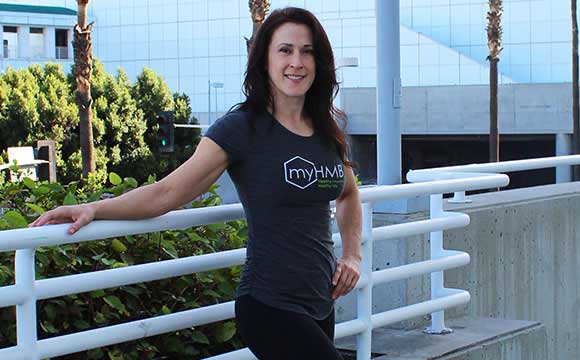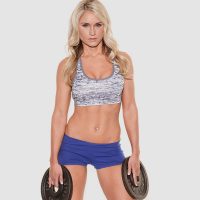The squat is a compound movement that is great to add to any training repetiteur as it allows you to build stability and strength. Personal trainer & team myHMB athlete Jennifer Dietrick is here with some key points to perform them correctly.
Squats are one of my favorite exercises. With all exercises, it’s most important that you’re doing full range of motion with correct form to get all of the benefits. I was asked a few times lately about the squeezing of the glutes at the top of the movement while tucking your pelvis under. I will touch upon that along with some other form checks I think are important.
Pelvic Tuck
The reasoning for tucking the pelvis that I usually hear is to get an extra emphasis on the glutes at the top of the movement. I suggest that you NOT tuck your pelvis under for a few reasons. First, if you want an extra emphasis, then it is barely giving any and forming bad habits. Adding weight would give more results. When adding weight, it is not safe to tuck the pelvis under, since the spine is not in a neutral position. At the top of the movement, you want to go back to the normal standing position and keep your pelvis neutral.
Foot Pressure
Keep most of the pressure in the heels throughout the movement. There is also pressure on the balls of your foot, yet I emphasize the heel for a reason. By doing so, there is less pressure on the knees and the movement is originating through the hips where it belongs. Oftentimes people push through the toes which adds pressure to the knees and emphasizes the quads.
Neutral Spine
Keep your spine neutral without arching or rounding the back. Typically, your form breaks when rounding the lower back at the bottom of the movement. This is often referred to as a butt wink. It tends to happen more often when someone is trying to squat lower than their body mechanics and flexibility allow. If you don’t have the mobility to go past parallel that’s okay. A flat back throughout the movement will keep your spine safe and the emphasis on your legs. Always engage the core throughout the squat to keep your back in a neutral position. When it is not engaged is when arching can occur.
Hip Hinge
Send your hips back as you’re lowering into the squat as if you’re sitting in a chair with your gaze looking forward at all times. The hinge will be in your hip joint and not your waist. Your chest naturally angles forward when doing so, yet there is no bend in the waist with extensive leaning forward of the chest. Inhale when lowering to the squat position and exhale when rising back up to standing. When using your body weight only, you can send your arms forward to counterbalance at the bottom of the squat. It is not necessary but it helps counterbalance during the squat.
Knee Alignment
Make sure your knees are in line with your toes yet make certain they do not move forward past your toes. There are different width stances you can choose from. Whichever width you choose, have your knees follow as well. So, if you’re a person who likes to turn your toes out then your knees should also go that direction. Depending on a person’s anatomy, the knees may be slightly past the toes at the bottom of the movement even though the hips are sitting back. You want to avoid the knees excessively going past the toes because you are not hinging at the hips and sitting back with your glutes.
Last but not least, have fun squatting and happy training!!





